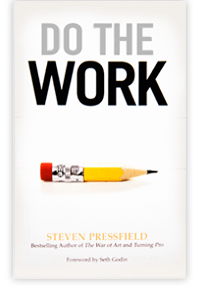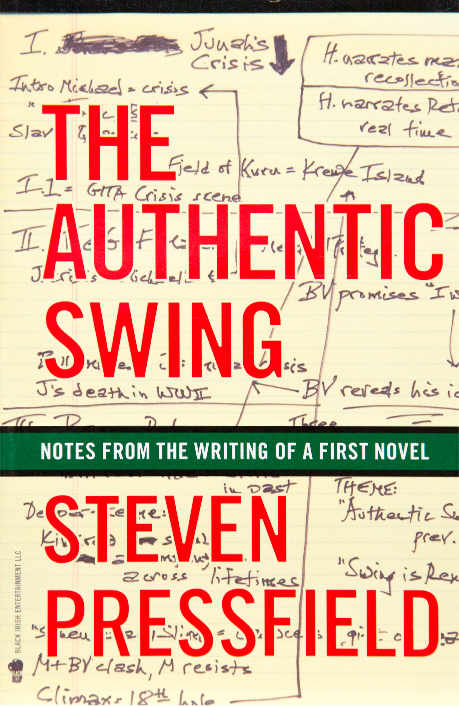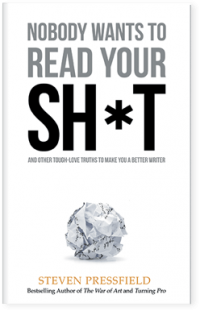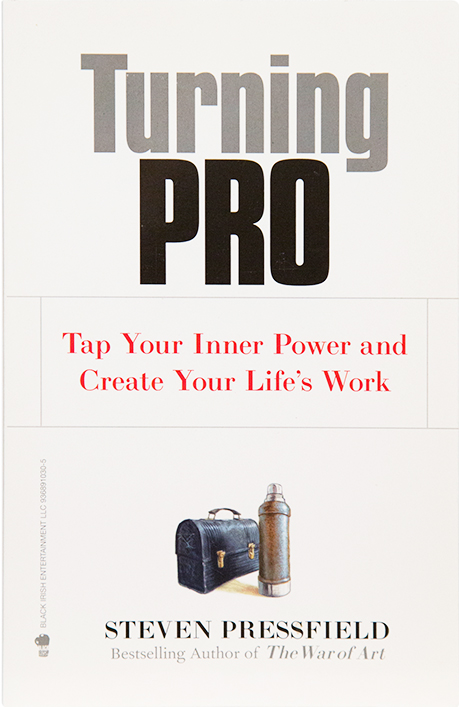Show ’em where the bullets strike

I never realized till I worked on movie sets that it’s not the director who shoots most of the action stuff. It’s the Second Unit Director. (Not always, but most of the time.)
The Second Unit Director often comes up via the stuntman/stunt coordinator/stunt choreographer route. Here’s something I learned one day from one of these gentlemen.
Always show ‘em where the bullets strike.
He was filming a shoot-out in a warehouse. Two good guys vs. ten bad guys. Pistols, machine guns, high falls, squibs of blood … hundreds of different camera set-ups. “How do you keep it all in your head?” I asked.
The Second Unit Director showed me a shot list that looked like War and Peace. Everything had been thought out and mapped out.
Bad Guy #6 pops up from the rafters, Good Guy #2 shoots him from below, Bad Guy #6 does a high fall into a dumpster.
But the key item to remember when filming such a sequence, the director said, was
When one guy shoots, always get coverage (meaning film) of where the bullet hits. (Even though, obviously, there is no real bullet.) Otherwise the action looks fake. It looks like you’re cheating. And the audience will see it and know it.

I’ve been binge-watching Game of Thrones lately and the filmmakers violate this principle all the time during the swordfights—to their detriment. Brienne of Tarth will swing her sword, Oathkeeper, and the camera angle will cut to her opponent ducking or falling or parrying … but it won’t be in response to that specific blow. This happens again and again, whether it’s Jon Snow dueling with Dolorous Ed in the yard at Castle Black or even a deep flashback sequence with the young Ned Stark slugging it out with other rival swordsmen.
The result is the fights look fake. I cringed. I kept thinking, “The filmmakers must’ve decided they didn’t have the time or the budget to put the actors (or their stunt doubles) through a really serious fight choreography preparation.”
But the bigger lesson here goes way beyond shootouts and swordfights.
When a character in a book or movie takes an action (or expresses some thought in dialogue), we must see (somewhere, at some time) the consequence of that action or speech.
We must see a reaction.
Maybe the reaction doesn’t come till thirty scenes later, as Tom Courtenay’s actions in 45 Years only pay off with Charlotte Rampling’s reaction in the final twenty seconds of the story. But one way or another, we cannot allow ourselves to portray an action or a speech that just sails off into nowhere and is never heard from again.
For every action, we must see a reaction.
We have to see where the bullets strike.




Surely they must have tons of frequent flyer miles from Aer Lingus and Icelandair. Cash those puppies out and trade them for fight choreography services from your Jeff Imada or your Sammo Kam-Bo Hung. Is Jackie Chan still working?
Beyond finding humor in the “fight choreography” metaphor here, I’m on board with the idea that there has to be a payoff. Thinking of “Chekhov’s gun.” From his letters, and appearing with slightly different wording depending on where you find it:
“If you say in the first chapter that there is a rifle hanging on the wall, in the second or third chapter it absolutely must go off. If it’s not going to be fired, it shouldn’t be hanging there.”
Joe, you beat me too it!
Chekhov was the very first thing that came to my mind when reading this entry.
Mike…
Great minds?
Speak for yourself. My list of poor decisions is ever-growing.
On the plus side, I’m never at a loss for things to write about.
I don’t know who said it first, but: “Bad decisions make good stories.”
I read a review of a John Woo movie once (Hard Target) that pointed this out specifically – one of the reason Woo’s action scenes work is because of his attention to the action-reaction of each shot landing. I just found it – written by Owen Glieberman in 1993 – it has stuck with me: “In a Woo action sequence, the audience is kept aware of everything that’s going on. A gun is fired, and you see where each bullet lands; during an impromptu hand-to-hand brawl, the camera lingers hypnotically over every thrust and parry, every lightning kick to the head.”
Many thanks for the weekly inspiration!
Contrast GoT with Flags of Our Fathers & Letters from Iwo Jima, where you see everything. Actually, there’s a couple of interesting things there. In Letters from Iwo Jima we see the Japanese soldiers blowing themselves up in the caves with grenades, then in Flags of Our Fathers we’re shown the mutilated corpses of those Japanese troops. Also, In Flags you know that Iggy has taken a fatal fall through a trap door from a foxhole into a cave, and you see his friends discovering this and gazing upon his, presumably hideously broken, corpse, horrified, but Eastwood and Spielberg for once don’t show us the actual corpse.
Very good advice, thank you, Steven.
I think your observation goes beyond mere action sequences. The pattern, every action needs reaction, is somehow deeply ingrained in our DNA as humans. You can see that right now with the isolation people suffer during the pandemic. What really gets at people (me included) is when an action you take is not rewarded with a reaction, as small as it might be. It hurts, it leaves you frustrated, if an email is not answered at all, if a phone call is not returned, etc.
There seem to be so called mirror neurons in our brains that are able to tell us what an action we take might look like from the perspective of our counterpart. I think they are, too, an indicator to show how dependent we are on the action-reaction pattern. If there are no reactions to the actions one takes, these mirror neuron might even wither away.
Yes, Michael. I couldn’t agree more.
Thanks, Debby, it’s nice to get some feed back and even more so if it’s positive
Oh, Steven, this is such powerful teaching. Now I am curious how to apply it to our characters’ thoughts, too. Not graphic like a bullet hole or gushing blood, but clear and obvious and memorable. Will you post on reaction to thoughts? Thank you!
Brilliant. Thank you.
This is spot on. I love the connections you make, the parallels you draw. When you point them out, it’s smacking us in the forehead, they’re almost obvious, yet we didn’t see them before. Thanks for the smacks!!!
FROM NYC:
Hey Steven,
Check out the Duellists. An early Ridley Scott film. Sword Master William Hobbs choreographed the swordfights. He introduced the idea of the pause between moves , grabbing any object nearby to hurl at the opponent and the idea of the fighting characters becoming exhausted during duel. All realistic and essential. Your fight scenes are always incredible, graphic and often ugly as they should be.
Thank you
Zinc Pederson
Great stuff. Reminds me of the animation principle of “Squash and Stretch” and the 12 Basic Principles of Animation used to give drawings “The Illusion of Life.”
Also reminds me a lot of this older Every Frame a Painting video:
https://www.youtube.com/watch?v=Z1PCtIaM_GQ
Kind of ties into the quiet moments theme you’ve been writing about lately. Without a follow-on scene showing the external impact of those internal decision-making scenes, the quiet moment loses its importance.
Lots to think about here. This blog is a treasure. Thank you for the gift, Steve!
That video on Jackie Chan’s choreography is a perfect illustration of today’s topic, Jeff. Thanks!
Love this one – as always, thanks!
Thanks Steve, hadn’t thought about it that way before…
We know too much how it’s done. I have been in several movies, and spent hours and hours on sets as an extra watching the filming. Now that I have been editing my own video creations with Premier Pro I have even a better understanding of the process. I’m watching a movie and I’m seeing the wide shot, then the per the shoulder sequences. I’m noticing the short lens with the shallow depth of field with the cinematic depth of field. Im seeing the long lens wide shot with everything in focus. I’m seeing all this and so much more, and I can’t say anything to my wife, she is seeing none of this, and doesn’t care to. I actually enjoy watching shows more now that I have such insight as to the editing. I can enjoy bad shows, because in the bad shows I can see what they did wrong, as you have seen in Game of Thrones. It’s the good shows and movies I don’t notice so much, because they are good. Big fan Steve, keep producing and sharing content. Bravo on the marketing you are doing for “A Man At Arms”, I appreciate all that your doing to promote your wonderful work.
TRUE STORY: I was in my bedroom (later office) and I heard screaming. Loud screaming, like somebody was kicking a dog. I grabbed my camera because I was tired of the bullshit again and I wanted photos. then he just out an let four shots rip right in front of me. I saw the smoke ring from the barrel. I saw the shooter jump and squint. I remember his finger on the trigger. I remember the casing in mid air all at once. Everything all at once. Fear, shock surprise. It wasn’t my first shooting. I dropped the camera and called 911, but they just slowed me down. I ran outside. I got to the spot where the shooter was and looked around. Nothing, no blood, no bodies, nobody. I ran up the entrance way, nobody in the the courtyard. I ran back out on the street. No one anywhere. My neighbors hid inside. I ran down to the end of the street. Nothing. Ran the other way, same. Nobody. The shooter was gone. I walked back and found the casings. Three out of the four. So waited with them. The cops were eventually going to show up and need the evidence. I waited. It seem like forever. Minutes definitely five maybe ten. I look up and there are people on the balcony of the condo down the street looking down on the scene. Then finally an ETF officer rolled in on me. He saw me and he tucked his machine gun behind him. I told him what I saw and where the casings were. Then finally some uniformed officer came in and sealed off the scene with the yellow tape. I wandered down the street still no seeing much. An officer rushed passed while staring at me. Then I saw Betty she came walking back and was out of breath. She told me what happened.
After nine shootings, five attempted murders (with two happening right in front of me) on my street, as well a murder and a manslaughter conviction, I am still waiting for the bullets to strike.
I love the analogy. I find in character development I am always trying to do the reverse. When a character comes into a novel, they are already full of bullet holes and I need to hint through the story why that is, show the reader where the bullet came from. I see this in a lot of other writing and movies. Take the character Wolverine, for instance- Why is he so angry? He has no memory, he has no idea how old he is and so he distances himself from everyone. This is either shown or hinted at in every film and throughout the comic books.
As new bullets strike, so to speak, the character will develop further. I think there is a pull sometimes to have an invincible hero- someone who is ‘bullet proof’ and unaffected by things. We admire the strength of consistency (like old school Superman), and yet it is boring and difficult to connect with.
And now I will be preoccupied with retracing bullets for the rest of the day– trying to decide if I showed their impact or if the shot was a complete miss. Thank you.
p.s.- The fight scenes in GoT are awful. It is true for a lot fo sword fights in film. They are too focused on flash and the actual fight goes out the window. I can’t tell you how many times I’ve sat in front of the tv yelling “Don’t turn your back on him! His head is WIDE OPEN! Hit him in the head!” Alas, they never listen…
I don’t know how many people find late comments in these Writing Wednesday posts. I came across this: Paul Auster on “How I Became a Writer.” He opens with a story about Willie Mays and a pencil, and closes with… let’s just say the story-telling here follows Steve’s “the In and the Out reflect each other.” It’s a beautiful thing.
https://youtu.be/pLhVjsczcb8
And to give a sense of how many people see late comments in here, if you watch the interview with Auster, would you leave some comment below? I’d be interested to hear what people think.
Thank you for sharing this video. Incredible that Auster articulates so well some of the exact thoughts and feelings I have on writing and the writing process. With that said, I tend to need to add more to my drafts instead of trimming them down to less. It seems it’s a challenge few writers address. But if you know any who do, and would like to share, I’d highly appreciate it, Joe.
The Auster interview is wonderful, Joe, thank you for pointing me towards it.
John and Bob… glad this connected. I really liked it, too. Auster tells the Willie Mays story, and several others that are even more moving, here: https://www.newyorker.com/magazine/1995/12/25/why-write
John, it feels like the challenge of cutting away the unnecessary is something that many writers deal with. Steve, here, talking about the challenges of trimming hundreds of pages from his 800-page draft of “Gates of Fire.”
***
Accounts of Cormac McCarthy and his revisions on “Blood Meridian” (https://slate.com/culture/2012/10/cormac-mccarthys-blood-meridian-early-drafts-and-history.html):
“For the next seven years or so, all the way to galley proof in 1984, McCarthy whittled Blood Meridian down into the lean nightmare we now know. He cut whole characters and became more and more sparing of his description of the ones that remained. This was nowhere more pronounced than with the character of the kid, the nameless ruffian and pseudo-protagonist of the tale.
“McCarthy scoured all mention of the kid’s family and heritage from the published version. Brief allusions in early drafts to the kid’s sister—“sent to live with a relative in North Carolina”—and his mother—“your mother fine, fineboned”—went under the knife. As did comments from the father about the kid’s childhood: “You were a grand child.” Offhand remarks about him being “Black Irish” and of some “Saxon and Spanish blood” had to go as well . . . Even the novel’s famous opening, “See the child,” was winnowed down from the more evocative, playful “See the child let in the snow.”
***
And of course Hemingway’s passage from “Death in the Afternoon”:
“If a writer of prose knows enough of what he is writing about he may omit things that he knows and the reader, if the writer is writing truly enough, will have a feeling of those things as strongly as though the writer had stated them. The dignity of movement of an ice-berg is due to only one-eighth of it being above water.”
Nice one! Thank you, Steve.
I think they are, too, an indicator to show how dependent we are on the action-reaction pattern.
The Toyota Supra has a rich history, originally introduced in the late 1970s. It became particularly famous in the 1990s with the fourth generation, often called the “MKIV” Supra. Check more details at https://auttomotives.com/toyota-supra-mk5-price-in-india/